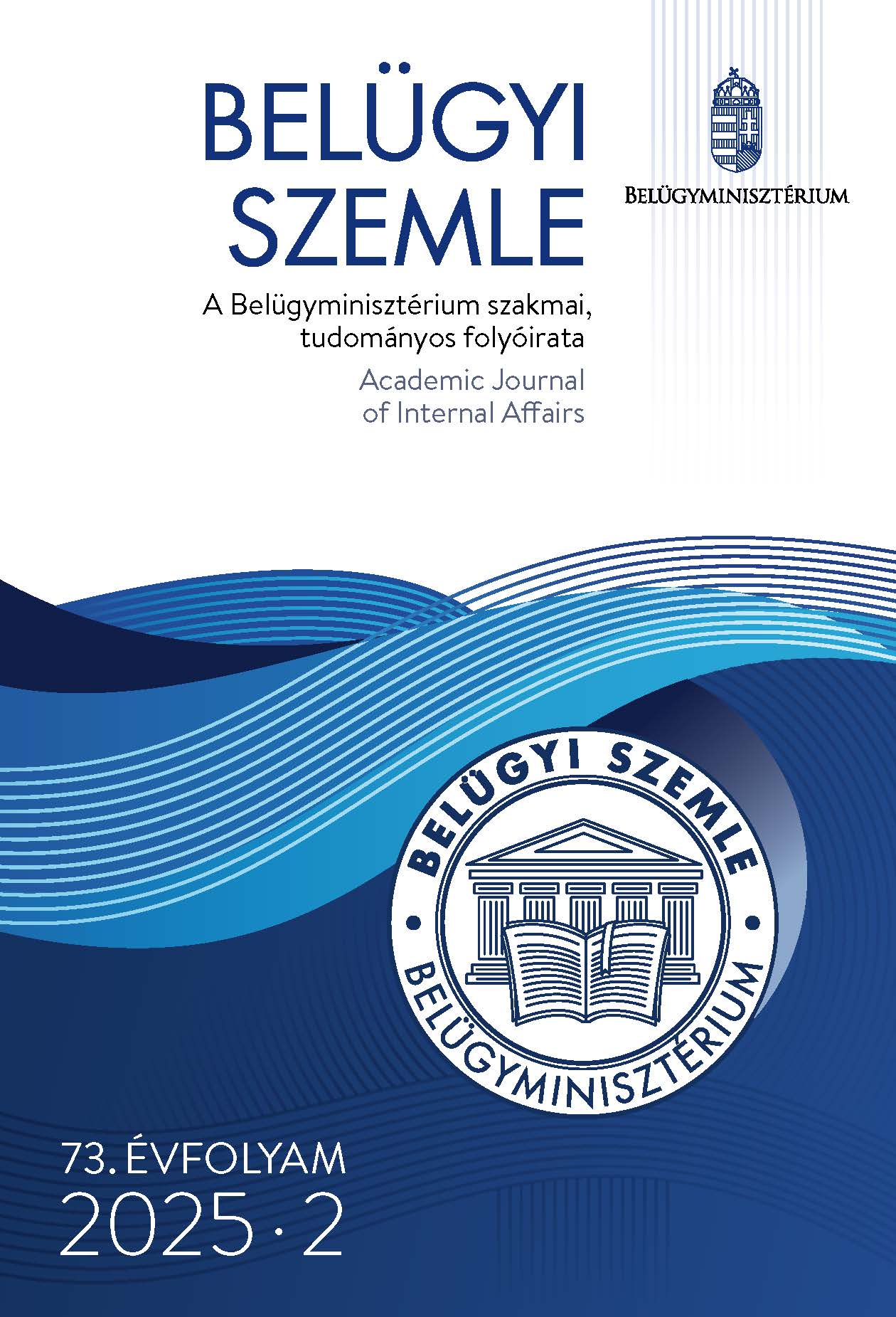Abstract
hormonal response to stress and influence the functioning of the nervous system at the genetic level, which may have a lasting effect on the organism's behaviour int he future. The so-called dual-hormone hypothesis suggests that the coexistence of high testosterone and low cholesterol is the hormonal basis for the manifestation of aggression, although the link has been shown to be well established in studies of men, and the results for women are incomplete or contradictory.
Aim: The article highlights the role of testosterone and cortisol in the hormonal background of aggression. Within the biological causes of violent behaviour, the study of hormonal factors deserves special attention, given that the hormonal system is strongly influenced not only by genetic bases but also by environmental influences.
Methodology: This study is based on an analysis and examine of the literature.
Findings: In the article, the author points to the differences in testosterone and cortisol levels underlying aggression and the interaction between the two hormones. The interaction of the two hormones under investigation is shown by the so-called dual-hormone hypothesis, for which the studies to date are not entirely clear. Nevertheless, experiments show a tendency to suggest that testosterone and cortisol are not independent of each other but can influence each other's effects.
Value: The journal article highlights the importance of the biological, hormonal causes behind aggression and the need for further research on this topic. Research into biological factors is also of particular importance from a legal point of view, as the question of whether the perpetrator has a physiological background that makes him or her only partially responsible for the act of violence or, in some cases, exempt from responsibility, is of importance in assessing the violence.
References
Dekkers, J. T., van der Veld, W. M., & Engelen, C. (2019). A meta-analytical evaluation of the dual-hormone hypothesis: Does cortisol moderate the relationship between testosterone and status, dominance, risk-taking, aggression, and psychopathy? Neuroscience and Biobehavioral Reviews, 96, 250–271. https://doi.org/10.1016/j.neubiorev.2018.12.004
Denson, F. T., Mehta, P. H., & Ho Tan, J. (2013). Endogenous testosterone and cortisol jointly influence reactive aggression in women. Psychoneuroendocrinology, 38(3), 416–421. https://doi.org/10.1016/j.psyneuen.2012.07.003
Fromm, E. (2001). The anatomy of human destructiveness. Háttér Kiadó.
Haller J., Farkas J., Fogarasi M., Kováts D., & Malét-Szabó E. (2020). Biological factors of crime. In Haller J. (Ed.), The criminal’s mind (pp. 2–14). Ludovika University Publishing House.
Hárdi I. (2000). Az agresszió világa. Medicina Könyvkiadó.
Igyártó Horváth Zs. (2009). Behavioural characterization of context-dependent aggressive behaviour in dogs (Doktori disszertáció). Eötvös Loránd Tudományegyetem, Etológia Tanszék.
Ludányi A. (Szerk.). (2011). A fehérjekutatás modern módszertana. Medicina Könyvkiadó Zrt.
Mehta, P. H. & Josephs, R. A. (2006). Testosterone change after losing predicts the decision to compete again. Hormones and Behavior, 50(5), 684–692. https://doi.org/10.1016/j.yhbeh.2006.07.001
Popma, A., Vermeiren, R., Geluk, C. A. M. L., Rinne, T., van den Brink, W., Knol, D. L., Jansen, L. M. C., van Engeland, H., & Doreleijers, T. A. H. (2007). Cortisol moderates the relationship between testosterone and aggression in delinquent male adolescents. Biological Psychiatry, 61(3), 405–411. https://doi.org/10.1016/j.biopsych.2006.06.006
Tamási E. (Szerk.). (2015). „Különös kegyetlenséggel”. Országos Kriminológiai Intézet.
Terburg, D., Morgan, B. E., & van Honk, J. (2009). The testosterone–cortisol ratio: A hormonal marker for proneness to social aggression. International Journal of Law and Psychiatry, 32(4), 216–223. https://doi.org/10.1016/j.ijlp.2009.04.008
Zilioli, S., Ponzi, D., Henry, A., & Maestripieri, D. (2015). Testosterone, cortisol and empathy: Evidence for the dual-hormone hypothesis. Adaptive Human Behavior and Physiology, 1(4), 421–433. https://doi.org/10.1007/s40750-014-0017-x

This work is licensed under a Creative Commons Attribution-NonCommercial-NoDerivatives 4.0 International License.
Copyright (c) 2025 Academic Journal of Internal Affairs

